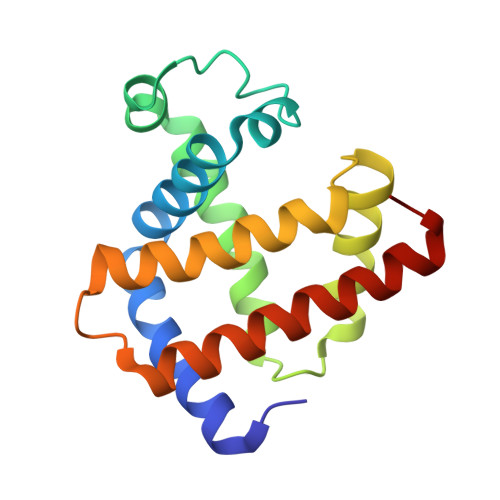Crystal Structure of a New Ligand Binding Intermediate in Wildtype Carbonmonoxy Myoglobin
Chu, K., Vojtechovsky, J., Mcmahon, B.H., Sweet, R.M., Berendzen, J., Schlichting, I.(2000) Nature 403: 921
- PubMed: 10706294
- DOI: https://doi.org/10.1038/35002641
- Primary Citation of Related Structures:
1DWR, 1DWS, 1DWT - PubMed Abstract:
Small molecules such as NO, O2, CO or H2 are important biological ligands that bind to metalloproteins to function crucially in processes such as signal transduction, respiration and catalysis. A key issue for understanding the regulation of reaction mechanisms in these systems is whether ligands gain access to the binding sites through specific channels and docking sites, or by random diffusion through the protein matrix. A model system for studying this issue is myoglobin, a simple haem protein. Myoglobin has been studied extensively by spectroscopy, crystallography, computation and theory. It serves as an aid to oxygen diffusion but also binds carbon monoxide, a byproduct of endogenous haem catabolism. Molecular dynamics simulations, random mutagenesis and flash photolysis studies indicate that ligand migration occurs through a limited number of pathways involving docking sites. Here we report the 1.4 A resolution crystal structure of a ligand-binding intermediate in carbonmonoxy myoglobin that may have far-reaching implications for understanding the dynamics of ligand binding and catalysis.
Organizational Affiliation:
P-21 Biophysics Group, Los Alamos National Laboratory, New Mexico, 87545, USA. kelvin.chu@uvm.edu

















